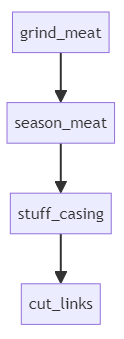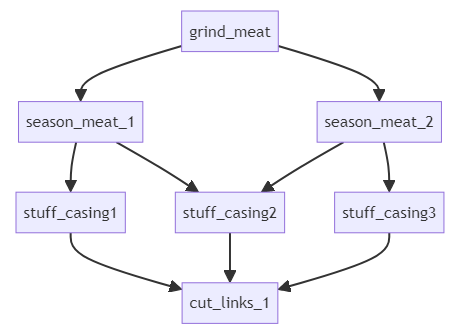13 Oct 2024
Since my earlier post looking into SIMD vectors in .NET, I
attempted a few more experiments, trying to understand better where
they might be a good fit, and where they would not.
The short version: at that point, my sense is that SIMD vectors can be very
handy for some specific scenarios, but would require quite a bit of work to be
usable in the way I was hoping to use them. This statement is by no means meant
as a negative on SIMD; rather, it reflects my realization that a SIMD vector is
quite different from a mathematical vector.
All that follows should also be taken with a big grain of
salt. SIMD is entirely new to me, and I might not be using it
right. While on that topic, I also want to thank @xoofx for his
very helpful comments - much appreciated!
Anyways, with these caveats out of the way, let’s dive into it.
My premise approaching SIMD was along these lines: “I write a lot of code that
involves vectors. Surely, the Vector class should be a good fit to speed up
some of that code”.
To explore that idea, I attempted to write a few classic vector operations I
often need, both in plain old F# and using SIMD vectors, trying to benchmark
how much performance I would gain. In this post, I’ll share some of the
results, and what I learnt in the process.
You can find the whole code here on GitHub.
More...
01 Sep 2024
Even though a lot of my work involves writing computation-heavy code, I have
not been paying close attention to the System.Numerics namespace, mainly
because I am lazy and working with plain old arrays of floats has been good
enough for my purposes.
This post is intended as a first dive into the question “should I care about
.NET SIMD-accelerated types”. More specifically, I am interested in
understanding better Vector<T>, and in where I should use it instead of
basic arrays for vector operations, a staple of machine learning.
Spoiler alert: some of my initial results surprised me, and I don’t understand
yet what drives the speed differences between certain examples. My intent here
is to share what I found so far, which I found interesting enough to warrant
further exploration later on.
Anyways, let’s dive in. As a starting point, I decided to start with a very
common operation in Machine Learning, computing the Euclidean distance
between 2 vectors.
You can find the whole code here on GitHub.
More...
20 Apr 2024
The main reason I created Quipu is that I needed a Nelder-Mead solver for a
real-world project. And, as I put Quipu through its paces on real-world data,
I ran into some issues, revolving around “Not a Number” floating point values,
aka NaN.
tl;dr: the latest release of Quipu, version 0.2.2, available on
nuget, should handle NaN values decently well, and has some minor
performance improvements, too.
In this post, I will go over some of the changes I made, and why. Fixing the
main issue made me realize that I didn’t know floating point numbers as well as
I thought, even though I have been using them every working day for years. I
will take some tangents to discuss some of my learnings.
So let’s dig in. My goal with Quipu was to implement the
Nelder-Mead algorithm in F#. The purpose of Nelder-Mead is to find a
numeric approximation of values that minimize a function. As an illustration,
if we took the function $f(x) = x ^ 2$, we would like to know what value of $x$
produces the smallest possible value for $f(x)$, which happens to be $x = 0$ in
this case.
Quipu handles that case just fine:
open Quipu.NelderMead
let f x = x ** 2.0
f
|> NelderMead.minimize
|> NelderMead.solve
val it: Solution = Optimal (0.0, [|0.0|])
So far, so good. Now, what about a function like $f(x) = \sqrt{x}$?
That function is interesting for 2 reasons:
- $f(x)$ has a minimum, for $x = 0$.
- $f(x)$ is defined only for $x \ge 0$: it is a partial function.
Sadly, the previous version of Quipu, version 0.2.1, failed to find it. It
would go into an infinite loop instead.
More...
26 Feb 2024
An old math problem I had not seen since my university days resurfaced the other
day, the Maximum Flow problem. It came up in the context of analyzing
some industrial process. For illustration purposes, let’s say we are producing
sausages, following these steps: we grind some meat, add some seasoning, then
stuff and tie the sausage casings, and split them into delicious sausage links.
We could represent this process as a graph, like so:

``` mermaid
graph TD;
grind_meat --> season_meat;
season_meat --> stuff_casing;
stuff_casing --> cut_links;
Now the question is, how many sausages per minute could we produce?
Assuming each operation is performed by a separate person, this is not very
complicated. We are going to be as slow as the slowest link. So if for instance
we could
- grind meat for 20 sausages / minute,
- season meat for 15 sausages per minute,
- stuff 5 sausages per minute, and
- cut 20 sausages per minute,
we would end up running at 5 sausages / minute at best, the bottleneck being
stuffing.
Now we might be able to get a better throughput with some parallelization. For
instance, we could organize production like so:

``` mermaid
graph TD;
grind_meat --> season_meat_1;
grind_meat --> season_meat_2;
season_meat_1 --> stuff_casing1;
season_meat_1 --> stuff_casing2;
season_meat_2 --> stuff_casing2;
season_meat_2 --> stuff_casing3;
stuff_casing1 --> cut_links_1;
stuff_casing2 --> cut_links_1;
stuff_casing3 --> cut_links_1;
This is still not overly complicated, but it is beginning to be hairy, and you
can imagine how with a few more processes added, the question “how much work
can I process through this network” will soon become impractical to handle by
hand.
This is essentially what the Maximum Flow problem is about. Given a directed
graph, with capacity limitations, how much throughput (flow) can we achieve?
In the rest of this post, I’ll go through one way you could answer that
question, using Linear Programming.
More...
23 Nov 2023
In my previous post, I went over the recent changes I made to my
F# Nelder-Mead solver, Quipu. In this post, I want to explore how I could
go about handling constraints in Quipu.
First, what do I mean by constraints? In its basic form, the solver takes a
function, and attempts to find the set of inputs that minimizes that function.
Lifting the example from the previous post, you may want to know what values of
$(x,y)$ produce the smallest value for $f(x,y)=(x-10)^2+(y+5)^2$. The solution
happens to be $(10,-5)$, and Quipu solves that without issues:
#r "nuget: Quipu, 0.2.0"
open Quipu.NelderMead
let f (x, y) = (x - 10.0) ** 2.0 + (y + 5.0) ** 2.0
NelderMead.minimize f
|> NelderMead.solve
val it: Solution = Optimal (2.467079917e-07, [|9.999611886; -4.999690039|])
However, in many situations, not every value will do. There might be
restrictions on what values are valid, such as “x must be positive”, or “y must
be less than 2”. These are known as constraints, and typically result in
an inequality constraint, in our case something like $g(x,y) \leq 0$. How could
we go about handling such constraints in our solver?
More...


